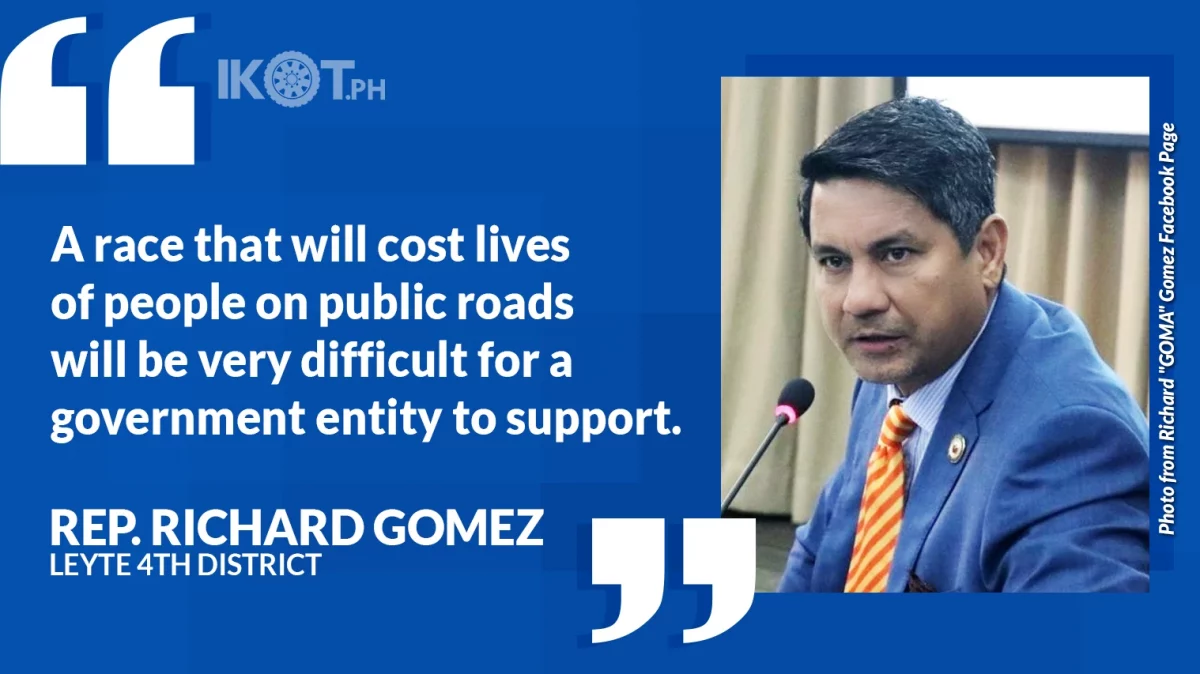The House Committee on Transportation chaired by Antipolo City Representative Romeo Acop began its inquiry, in aid of legislation, into the recent 2024 BOSS Ironman Motorcycle Challenge (BIMC) Luzon leg, which resulted in the death of two non-participant riders.
Acop said that aside from dealing with safety issues, the committee wants to know on who should be held responsible for the loss of lives, injuries and damages to property by reason of or on the occasion of the 2024 BMW Owners’ Society of Riders Ironman Motorcycle Challenge.
“We have invited relevant government agencies, as well as other motorcycle organizations, to get the proper context and whole picture of this issue. We hope to gather pertinent facts and information, which this committee will consider in crafting recommendations to address the issues raised on the matter,” Acop, a lawyer, said.
Based on House Resolution (HR) 1612 filed by 1-RIDER Party-list Representative Bonifacio Bosita, non-participants were killed in separate incidents due to recklessness and over speeding of participating riders, the first one in Dagupan City, Pangasinan, and the other in San Juan, La Union.
Leyte Representative Richard Gomez also filed HR 1620 calling for a similar inquiry.
Acop asked resource persons to identify the parties accountable for the deaths, injuries or damages to property during events like the BMIC.
The legislator cited the case of Abrogar vs. Cosmos Bottling Company, which ruled that organizers can be civilly prosecuted in case of negligence on their part.
“Sa mga organizers, I believe kung may nangyari pang ganito at maka-konsulta pa sila ng abogado, they can file a civil case against you,” the lawmaker said.
Gomez and Acop discouraged the Department of Tourism (DOT) from supporting the BIMC primarily because of safety issues.
They grilled Margarita San Jose, the acting division chief of the DOT’s Industry Relations and Services Division – Domestic Promotions Department, about the tourism component of the BIMC.
“Kung mga unity ride na parang pasyal lang at close speeds, then I understand na that’s good. But a race that will cost lives of people on public roads will be very difficult for a government entity to support,” Gomez said.
The legislator wondered how local government units benefit from the BIMC when the motorcycles just pass through the LGUs during the race.
San Jose replied that the riders stop at certain identified destinations, take a break, spend some time, dine and shop a little.
Gomez disagreed, saying the riders are in a hurry because the race has to be completed within 24 hours.
“The motorcycles pass through nine provinces. In short, nagmamadali silang makatapos ng 24 hours.”
“The motorcycles pass through nine provinces. In short, nagmamadali silang makatapos ng 24 hours. And if it’s a big motorcycle, most likely it will stop for three or four times just to refill (its gas tank),” the lawmaker said.
Acop agreed, “Hindi na hihinto ang mga riders dyan dahil ang intention nila matapos nga nila ng mabilisan. Kayo naman pinipilit ninyo i-connect sa tourism. I cannot say any aspect of that na mako-connect sa tourism.”
Gomez identified 1) over speeding, 2) blinding auxiliary lights of motorcycles at night on highways, 3) counter-flowing of vehicles which can cause road accidents, and 4) the noise coming from over 1,000 motorcycles running at night as some of the issues against the BIMC endurance contest.
“It does not become motorcycle tourism; it becomes noise tourism.”
“It does not become motorcycle tourism, it becomes noise tourism. Sa probinsya, pagdating ng 9PM tahimik na lahat hanggang 5AM ‘yun,” he added.
San Jose promised that they will study the lawmakers’ recommendations.
The BIMC is an endurance event organized by the BMW Owners’ Society of Safe Riders (BOSS), which challenges participants, including riders, automobile drivers, and even members of law enforcement agencies, to complete a route of at least 1,200 kilometers in Luzon, Visayas and Mindanao within 24 hours.
On February 25 and 26, 2024, the BOSS organized the 2024 BIMC Luzon leg, extending to almost 1,400 kilometers across the provinces of Northern Luzon.


